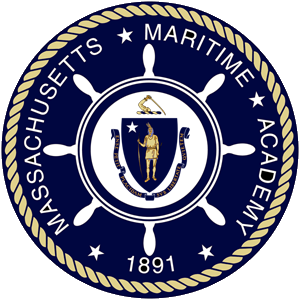MT-1221
Coastal Navigation
Course Description
This course introduces a student to the knowledge and practices necessary to carry out routine day to day navigational watch keeping duties in a proper and safe manner. The student will be able to understand and read information from a chart; fix the ship’s position in coastal waters; understand earth’s magnetism; comprehend buoyage systems; and check and compare magnetic and gyro compasses, obtaining and applying compass error. In addition, the student will be introduced to the basic concepts and obtain an understanding of electronic navigation systems. Classwork is supplemented by practical chart plot exercises in weekly labs including time in the Electronic and Navigation Lab (ENL) or Integrated Navigation Lab (INL) simulator with students working in teams of two at each student station. Note: A student who fails twice to receive a minimum C- grade will be disenrolled from the Marine Transportation degree program. [Lab time required]
This course consists of two 1-hour lectures and one 2-hour lab per week for a semester with a comprehensive final examination.
Entrance requirements
None
This course serves as a pre-requisite for MT-2121 Deep Sea Navigation and MT-2161 Rules of the Road.
Learning Objectives
Demonstrate knowledge and understanding of the following STCW elements:
- OICNW-A1.02 Ability to determine the ship’s position by use of landmarks
- OICNW-A1.02 Ability to determine the ship’s position by use of aids to navigation, including lighthouses, beacons and buoys
- OICNW-A1.02 Ability to determine the ship’s position by use of dead reckoning, taking into account winds, tides, currents and estimated speed
- OICNW-A1.06 Knowledge of the principles of magnetic and gyro-compasses
Topics
Lecture
- Course Intro
- Navigation Introduction
- Nautical Charts
- Chart Projections
- Plotting Direction & Distance
- LOPs and Fixes
- Dist., Speed, Time
- Dead Reckoning
- Running Fix
- Danger Bearings
- Special Case Bearings
- Earth’s Magnetism
- Magnetic Variation
- Magnetic Compass
- Deviation and Compass Error
- Deviation Compensation, Tables, Interpolation
- Gyro Compass and Gyro Error
- Other Directional Devices
- Aids to Navigation (ATONS)
- Buoy Systems
- Lights
- Electronic Aids
- RADAR
- Fathometer Navigation
- Satellite Navigation
- ECDIS
- Chart Datum & Accuracy
- Navigation Publications
Labs
- Geographic Coordinates
- Plotting Instruments
- Plotting Lat., Long., Dir., & Dist
- Position Fixing
- Dead Reckoning Plotting
- Running Fix Plotting
- Using Special Case Problems
- Magnetic Variation, Bearings, Piloting
- Magnetic Deviation and Gyro Compass
- Light Ranges READ
- Chart Plot - Final Exam Practice
- Chart Plot Final Examination
Other objectives
- Display knowledge of how to read and understand nautical charts and publications
- Demonstrate an ability to quickly and accurately plot Latitude and Longitude
- Exhibit an aptitude to rapidly and precisely determine and plot of courses; true and magnetic
- Show the ability to calculate Speed/Time/Distance problems
- Prove an understanding of how to determine and apply magnetic Compass Error, Variation, and Deviation
- Present a proficiency in the skill of properly plotting various types of electronic and terrestrial navigation fixes
- Exhibit the use of effective Dead Reckoning principles
- Reveal knowledge of how to accurately calculate the Geographic, Nominal and Luminous visibilities of lights, and
- Display proper plotting and use of RADAR navigation fixes
- Be familiar with and understand navigation terminology
- Understand information available on charts and in navigation publications
- Have developed the skill of using the tools of navigation
- Know they can keep their vessels out of danger when navigating in Coastal Waters by fixing their position through various techniques and making adjustments necessary to compensate for various sources of error, and
- Appreciate how piloting skills are used in industry
